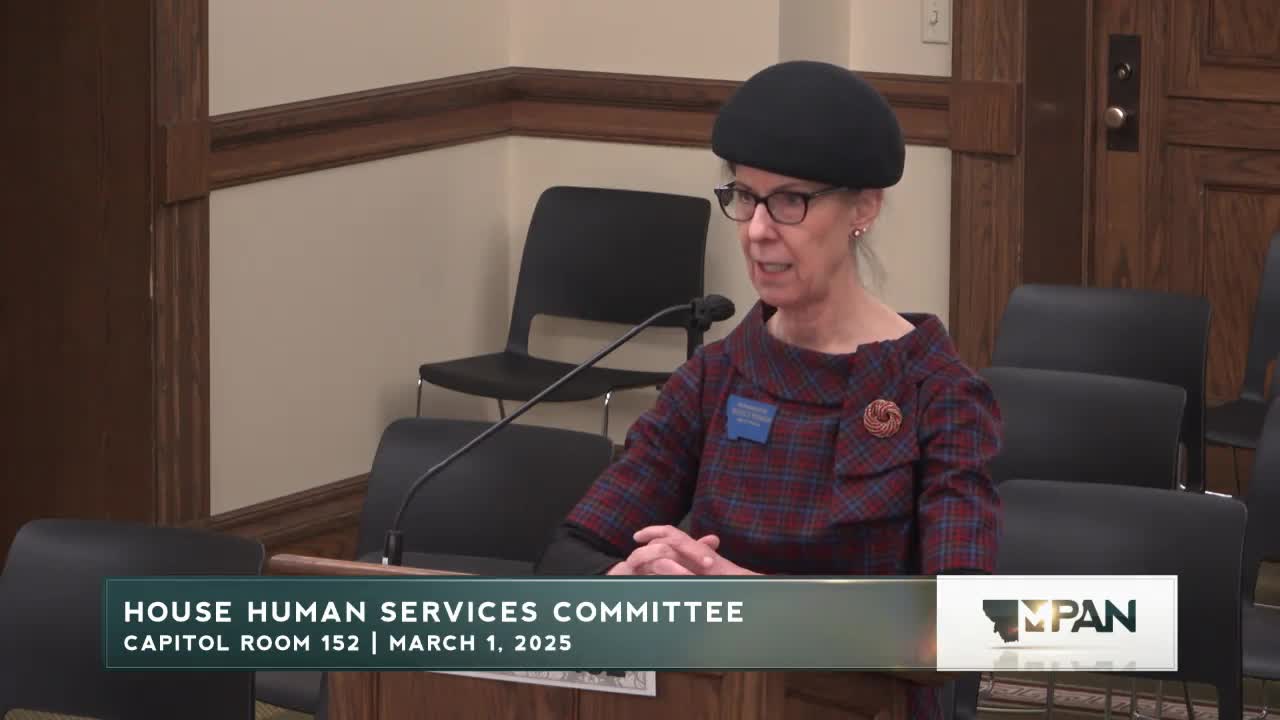Representative Cunningham proposes House Bill 825 for trusted medical decision makers in Montana
March 01, 2025 | 2025 Legislature MT, Montana
This article was created by AI summarizing key points discussed. AI makes mistakes, so for full details and context, please refer to the video of the full meeting. Please report any errors so we can fix them. Report an error »

House Bill 825, aimed at enhancing medical decision-making for incapacitated Montanans, took center stage during a recent House Human Services meeting. Representative Melody Cunningham introduced the bill, which proposes the creation of a "trusted decision maker" option for patients unable to communicate their medical wishes.
Currently, Montanans can designate a medical power of attorney or create an advance directive, both of which require extensive planning and documentation. Cunningham emphasized the need for a simpler solution, especially in urgent situations where patients may suddenly lose the ability to make decisions. The proposed trusted decision maker would allow individuals to verbally express their choice of a decision-maker to healthcare professionals while they still have the capacity to communicate.
Supporters of the bill, including representatives from the Montana Medical Association, highlighted its potential to fill a significant gap in patient care. They noted that many patients lack formal advance directives, which can complicate medical decisions during emergencies. Dr. Christopher Johns, a palliative care physician, shared a poignant example of a patient whose neighbor was better suited to make decisions than estranged family members, underscoring the importance of having a trusted individual designated in advance.
The bill also establishes a hierarchy for decision-making in the absence of a designated trusted decision maker, ensuring that healthcare teams have clear guidance on whom to consult. This hierarchy includes spouses and adult children, but allows for flexibility in recognizing individuals who may better understand the patient's values and wishes.
As the committee deliberates, the implications of House Bill 825 could significantly impact how medical decisions are made in Montana, providing a more accessible avenue for patients to ensure their wishes are honored when they cannot speak for themselves. The next steps will involve further discussions and potential amendments as the bill moves through the legislative process.
Currently, Montanans can designate a medical power of attorney or create an advance directive, both of which require extensive planning and documentation. Cunningham emphasized the need for a simpler solution, especially in urgent situations where patients may suddenly lose the ability to make decisions. The proposed trusted decision maker would allow individuals to verbally express their choice of a decision-maker to healthcare professionals while they still have the capacity to communicate.
Supporters of the bill, including representatives from the Montana Medical Association, highlighted its potential to fill a significant gap in patient care. They noted that many patients lack formal advance directives, which can complicate medical decisions during emergencies. Dr. Christopher Johns, a palliative care physician, shared a poignant example of a patient whose neighbor was better suited to make decisions than estranged family members, underscoring the importance of having a trusted individual designated in advance.
The bill also establishes a hierarchy for decision-making in the absence of a designated trusted decision maker, ensuring that healthcare teams have clear guidance on whom to consult. This hierarchy includes spouses and adult children, but allows for flexibility in recognizing individuals who may better understand the patient's values and wishes.
As the committee deliberates, the implications of House Bill 825 could significantly impact how medical decisions are made in Montana, providing a more accessible avenue for patients to ensure their wishes are honored when they cannot speak for themselves. The next steps will involve further discussions and potential amendments as the bill moves through the legislative process.
View full meeting
This article is based on a recent meeting—watch the full video and explore the complete transcript for deeper insights into the discussion.
View full meeting
